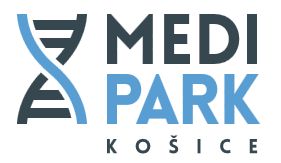The classic Erasmus scheme goes international, by mainstreaming international mobility into the existing higher education mobility framework that has proven its worth.
“International mobility” is the mobility of staff and PhD students between Programme Countries and Partner Countries. “Partner Countries” means the “third countries not associated to the Erasmus+ programme”, which is the official term. ‘Outgoing’ (mobility) means going from Programme Countries to Partner Countries, ‘incoming’ (mobility) means going from Partner Countries to Programme Countries.
From 2021 onwards, all ECHE holders will have the possibility of engaging in international mobility by default.
KA131 vs. ka107
What?
Why?
European Education Area
Internationalisation of higher education, people-to-people contacts and – for some regions – development and cooperation.
What for?
Who?
Who?
Where to?
HEIs to determine the geographical scope most relevant in the framework of their internationalisation strategy. No breakdown of budget per region. Diversification of destination countries encouraged.
breakdown of budget per region
How?
How?
Simple application
How?
How much?
All HEIs holding the ECHE have the possibility of carrying out international mobility and to do so every year of the programme.
At the level of institutions, international mobility, is becoming accessible to all ECHE holders in a non-competitive way, by being built into their KA1 grant applications. HEIs can apply for funding every year, for every call, and thus ensure stable funding for international mobility. HEIs are encouraged to diversify their offer of destination countries, partner HEIs and other host organisations.
The main target groups benefiting from international mobility in KA131 are the following:
- Higher education PhD students and staff in HEIs in Programme Countries in terms of skills development and experience.
- Higher education PhD students and staff in HEIs in Partner Countries, in terms of internationalisation at home and cooperation opportunities.
All staff and PhD students of the afore mentioned HEIs have the possibility of going on mobility to all countries worldwide (any Partner Country in the world – Regions 1 to 14).
International mobility can be carried in partner countries of the Erasmus+ programme. Mobilities to programme countries are not part of the initiative.
International mobility budget is limited up to 20% of the awarded KA131 project budget/grant in the latest grant agreement, and it should include several international partners, who are from diverse geographical regions.
The opening of KA131 to international mobility entails that up to 20% of funds awarded to each mobility project by the NAs may be used by the beneficiary to fund mobility activities from Programme to non-associated third countries (Partner Countries). This will ensure sustainable international cooperation year after year, as well as greater involvement and accessibility.
The principle is that the budget for international mobility will be used to fund outgoing mobility of staff from the HEIs located in Programme Countries to HEIs located in Partner Countries.
Staff is entitled to travel support similarily to mobilities to programme countries, and to an individual financial support which depends on the target region:
- 180 €/day (regions 1-12)
- 160 €/day (region 14)
- 140 €/day (region 13)
PhD students participating in short-term mobilities (5-30 days) are entitled to individual support for physical mobilities, including travel days, regardless of the target country: 70 EUR per day for day 1 – 14, and 50 EUR per day for days 15 – 30.
Mobility participants with fewer opportunities are entitled to a top-up amount of € 100 above the basic rate for a physical mobility lasting 5-14 days and of € 150 for a physical mobility lasting 15-30 days.
The individual support base amounts for long-term student mobility and for (short-term) staff mobility are those of call 2020 KA107/ ICM and those of the Programme Countries (for Regions 5 and 14).
At mobility level, the beneficiary may apply the same flexibility of KA131 intra-European mobility to its international mobility:
- Full-zero grant mobility;
- Partial zero grant mobility (it is recommended to fund at least the average European duration in case the mobility is longer: five months for studies, four months for traineeships and five days for staff mobility; the minimum funding duration is the minimum mobility duration);
- In all cases, participants with fewer opportunities receive the grant for the full mobility duration.
The budget transfer rules of the grant agreement equally apply to international mobility funds.
The quality of international mobility is ensured by the proven quality elements carried over from the KA131 predecessor scheme (KA103) and by the established good practices of implementing KA107/ICM. On the one hand, this includes KA103 elements such as a past performance-based grant allocation policy, ECHE monitoring and a flexible grant system including interim reporting/funding redistribution mechanisms. On the other hand, KA107 and its beneficiaries since 2015 have gained experience with international inter-institutional agreements, ensuring adherence of Partner Countries’ HEIs to the ECHE principles, building project-based strategic partnerships to perform international mobility of all types, and other practical aspects, such as visa handling.
International mobility is embedded and carried out within the KA131 quality framework, consisting of the following quality elements:
- Erasmus charta pre vysokoškolské vzdelávanie (ECHE)
- ECHE Guidelines
- Erasmus Policy Statement
- Grant allocation policy
- ICM Handbook
- Monitoring tools
- Interim reporting
- Final beneficiary report.
Every study, and teaching mobilty has to be preceded with the establishment of IIA in accordance with the ECHE, even in the case of international mobilities at partner universities in partner countries.
IIA requirements:
- PhD study mobility: IIA is required
- PhD traineeship mobility: IIAs are required if the traineeship is held at HEI (e.g. university laboratories, hospitals etc.). In independent institutions, IIAs are not necessary.
- Teaching staff mobility: IIA is required.
- Training staff mobility: IIAs are required if the traineeship is held at HEI (e.g. university laboratories, hospitals etc.). In independent institutions, IIAs are not necessary.
At the moment, IIAs with HEIs in partner countries are not in electronic format but they will become part of the European Student Card Initiative in the future.













